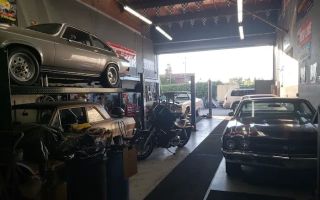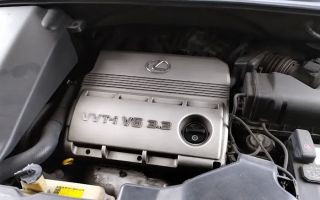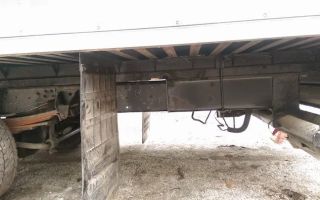Handling a Car Tire Blowout: What You Need to Know
A tire blowout is one of the most alarming events you can experience while driving. I’ve had my fair share of car trouble over the years, but a blowout is definitely one of the most intense. In this article, I’ll share what you need to know about handling tire blowouts, how to react in the moment, and most importantly, how to prevent them from happening in the first place. I’ll also walk you through some practical steps to take when you find yourself in this sticky situation, ensuring you’re as prepared as possible if it ever happens to you.

MR. TIRE INC.
2078 New York Ave, Huntington Station, NY 11746, USA
What Happens During a Tire Blowout?
Let me start by explaining what exactly happens during a tire blowout. A tire blowout occurs when a tire, usually due to damage or wear, loses air pressure rapidly. Unlike a slow leak, a blowout happens all at once, causing the car to lose stability. Imagine cruising along the highway when suddenly, you hear a loud pop, followed by a series of vibrations or a loud thumping sound. The car might pull sharply to one side, and the steering wheel might feel much harder to control. It’s a moment of panic for most drivers, and I know I’ve been there.
The cause of a blowout could be many things: under-inflated tires, debris on the road, excessive speed, or an old or worn-out tire. Understanding the cause of blowouts can help you avoid them in the future, but what’s more important is knowing how to handle the situation when it happens.

MR. TIRE INC.
2078 New York Ave, Huntington Station, NY 11746, USA
Step-by-Step Guide to Dealing with a Tire Blowout
When I had my first tire blowout, I was driving on a highway at night. My heart was racing as I gripped the steering wheel. I was lucky enough to react correctly, but not everyone knows what to do. Here's a step-by-step guide that can help you stay calm and manage the situation effectively:
- Stay Calm and Focused: The first and most important step is to stay calm. Panicking will only make things worse. If you’re like me, you might feel your heart start to race as soon as the blowout happens. But try to stay composed—your ability to think clearly will determine how well you handle the situation.
- Keep a Firm Grip on the Steering Wheel: One of the first things I did was grip the steering wheel firmly. The car might pull sharply to one side, so it’s important to maintain control. Don’t jerk the wheel or slam on the brakes. Instead, hold the wheel firmly with both hands to keep the car straight.
- Slow Down Gradually: Once you feel the car pull to one side, gently take your foot off the accelerator. Let the car slow down naturally. Avoid slamming on the brakes, as doing so could cause the vehicle to lose control. Use the engine's deceleration to bring your speed down, allowing time for your mind to clear and to plan your next move.
- Turn on Your Hazard Lights: It’s always important to make your presence known to other drivers. As soon as the blowout happens, turn on your hazard lights. This will signal to other drivers that you’re experiencing an emergency, and they’ll be more cautious when passing.
- Move to the Shoulder: As the car slows down, aim to guide the vehicle toward the shoulder of the road. Ideally, you should move as far off the roadway as possible to avoid being hit by passing vehicles. If you’re on a busy highway, be mindful of your surroundings, and stay as far from traffic as you can.
- Stop and Assess the Situation: Once the car has come to a complete stop, put it in park and turn off the engine. If you're not in immediate danger, take a moment to assess the situation. If you have a spare tire, jack, and other necessary tools, you can change the tire yourself, provided you’re comfortable doing so.
How to Change a Tire After a Blowout
In case you’re faced with a blowout and need to change the tire yourself, here’s how to do it step-by-step:
- Gather Your Tools: First, make sure you have the necessary equipment—your spare tire, a jack, and a lug wrench. I always keep these items in my car just in case. If you don’t have a spare, it’s a good idea to call for roadside assistance or a towing service.
- Lift the Car: Using the jack, carefully lift the car off the ground. Be sure to place the jack under a solid part of the vehicle’s frame, and lift the car high enough to remove the flat tire and replace it with the spare.
- Loosen the Lug Nuts: Use the lug wrench to loosen the lug nuts holding the tire in place. It’s important to do this before you fully lift the car to prevent the wheel from spinning. Loosen the nuts in a star pattern to ensure even pressure distribution.
- Replace the Tire: Once the lug nuts are loose, remove the flat tire and place the spare tire on the wheel hub. Tighten the lug nuts by hand first, then use the lug wrench to tighten them securely. Be sure to follow the same star pattern when tightening to ensure even distribution of pressure.
- Lower the Car and Test: After replacing the tire, carefully lower the car back to the ground using the jack. Once the car is stable, tighten the lug nuts one last time to ensure the tire is securely in place.
Preventing Tire Blowouts
Although I was lucky to avoid any accidents during my blowout, I realized after the fact that there were a few things I could have done to prevent it in the first place. Here are a few tips to help reduce the chances of a tire blowout:
- Maintain Proper Tire Pressure: Keeping your tires inflated to the proper pressure is one of the most important things you can do to prevent a blowout. I check my tire pressure regularly, especially before long trips.
- Inspect Your Tires Regularly: Check your tires for visible signs of damage or wear. Look for cracks, bulges, or punctures that might indicate a weak spot in the tire. I inspect my tires monthly to make sure they’re in good shape.
- Avoid Overloading Your Vehicle: Overloading your vehicle can put unnecessary pressure on your tires, increasing the risk of a blowout. Make sure you’re following the manufacturer’s weight limits for your car.
- Replace Old Tires: Tires don’t last forever. If your tires are over six years old or show signs of excessive wear, it’s time to replace them. I’ve learned this the hard way and now replace my tires every few years to avoid risk.
When to Call for Help
Not everyone is comfortable with changing a tire themselves. If you’re unsure about your ability to handle a blowout, or if you simply don’t want to deal with it, it’s okay to call for help. A roadside assistance service or towing company can help you get back on the road quickly and safely. I’ve had times when I’ve called for a tow just to avoid the hassle of changing the tire myself.
Fortunately, many towing companies offer 24/7 emergency services. You can find reputable companies like Rescue & Towing that provide quick and reliable roadside assistance, including tire changes.




























